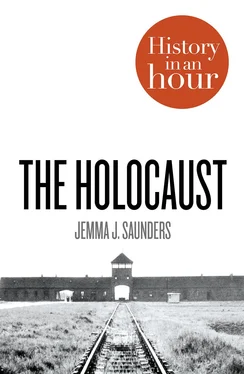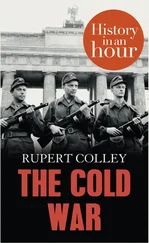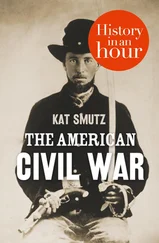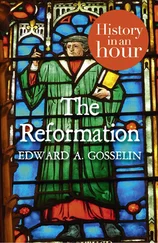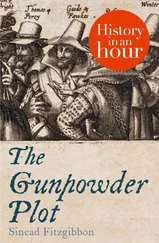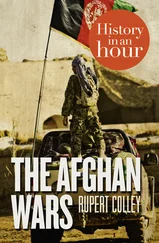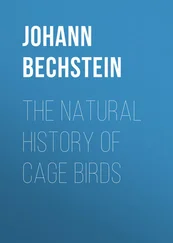As fighting continued across Europe, resources in the ghettos became scarce. The official food rations constituted barely 300 calories of sustenance per day, and severe malnourishment or death from starvation was commonplace. Children often foraged beyond the ghetto confines at night for supplies, as they were less likely to be caught than adults. Some used the sewers as a discreet means of moving from one area to another, in search of bread, medicine or weapons. Overcrowding and a lack of basic amenities resulted in filthy conditions both in houses and on the ghetto streets, which in turn led to the inevitable spread of lice and diseases such as typhus.
The Nazis ordered the establishment of Jewish Councils to act as administrative bodies within the ghettos. These Judenräte were usually formed of prominent community figures, often elders, through whom the Nazis disseminated their rules and orders. Demands were habitually made on the Judenräte which had to be met or the consequences would be swift and severe. If the SS ordered that 1,000 gold wedding rings should be handed over by the next day, 1,000 rings would have to be sourced and delivered within the timeframe granted. Refusal to comply could result in death, but collusion with the Nazis at any level weighed heavily on individual consciences. Indeed, some Jewish leaders, such as Adam Czerniakow, committed suicide when asked to compile deportation lists, rather than initiate actions that would send thousands of their compatriots to almost certain death.
Rutka Laskier lived in the Bedzin ghetto and wrote of the horrors she witnessed under the Nazi occupation in her diary, including seeing a German soldier brutally kill a Jewish child. Like many ghetto Jews, Rutka worked for low wages in a local factory. Employment was a fragile safety net, as any Jew deemed ‘unproductive’ was at even greater risk of maltreatment. Aged just 14 when her family was moved from Bedzin’s open ghetto to the closed Kamionka ghetto, Rutka was nevertheless later deported.
Specially commissioned propaganda films and imagery of ghetto life strove to depict Jews as living comfortably in the areas where they has been ‘resettled’. In reality, conditions were cramped, unsanitary and demoralizing. Theresienstadt, in Czechoslovakia, was portrayed as a model ghetto where elderly Jews and Jewish war veterans were sent to retire. In truth, this was another Nazi deception and an estimated 33,000 people still perished there during the war. Like the majority of ghettos in which Jews were interned, Theresienstadt was, for most who were sent there, either their final destination or the penultimate stop on a road to slave labour and death.
West of Germany: Yellow Stars and Registration West of Germany: Yellow Stars and Registration Pit Killings The Euthanasia Programme Wannsee and the ‘Final Solution’ Deportation Selection The Will to Live Arbeit Macht Frei Killing Factories Medical Experiments Collaboration and Resistance Death Marches Liberation Remembrance and Retribution The Holocaust: Key Players The Holocaust: Timeline Got Another Hour? Copyright Конец ознакомительного фрагмента. Текст предоставлен ООО «ЛитРес». Прочитайте эту книгу целиком, купив полную легальную версию на ЛитРес. Безопасно оплатить книгу можно банковской картой Visa, MasterCard, Maestro, со счета мобильного телефона, с платежного терминала, в салоне МТС или Связной, через PayPal, WebMoney, Яндекс.Деньги, QIWI Кошелек, бонусными картами или другим удобным Вам способом. About the Publisher
Prior to 1942, the experience of Jews in Western Europe was markedly different from that of Jews in eastern countries such as Poland, predominantly because no systematic ghettoization took place to the west of Germany. Each time another western country surrendered to the Nazi war machine, however, the Jews of that nation were subjected to discriminatory measures by the occupying forces. Anti-Semitic legislation was particularly stringently applied in the Netherlands and France, which fell to the Nazis in May and June 1940 respectively.
As had been the case in Germany since the mid-1930s, by the summer of 1942 Jews in the Netherlands and France were banned from cinemas, theatres, swimming pools and even from sitting on park benches. Curfews limited the hours they could spend outside their homes, and restrictions were placed on the shops they could visit, the transport they could use, and the healthcare and education they could receive. Refugees who had fled to these countries in the 1930s, in hope of security and tolerance, were no longer safe from Nazi persecution.
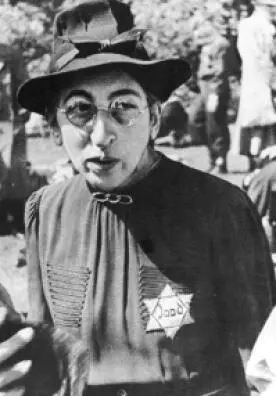
A Jewish lady in Amsterdam wearing a yellow star, 1941
Bundesarchiv, Bild 183-R99538 / CC-BY-SA
Конец ознакомительного фрагмента.
Текст предоставлен ООО «ЛитРес».
Прочитайте эту книгу целиком, купив полную легальную версию на ЛитРес.
Безопасно оплатить книгу можно банковской картой Visa, MasterCard, Maestro, со счета мобильного телефона, с платежного терминала, в салоне МТС или Связной, через PayPal, WebMoney, Яндекс.Деньги, QIWI Кошелек, бонусными картами или другим удобным Вам способом.
